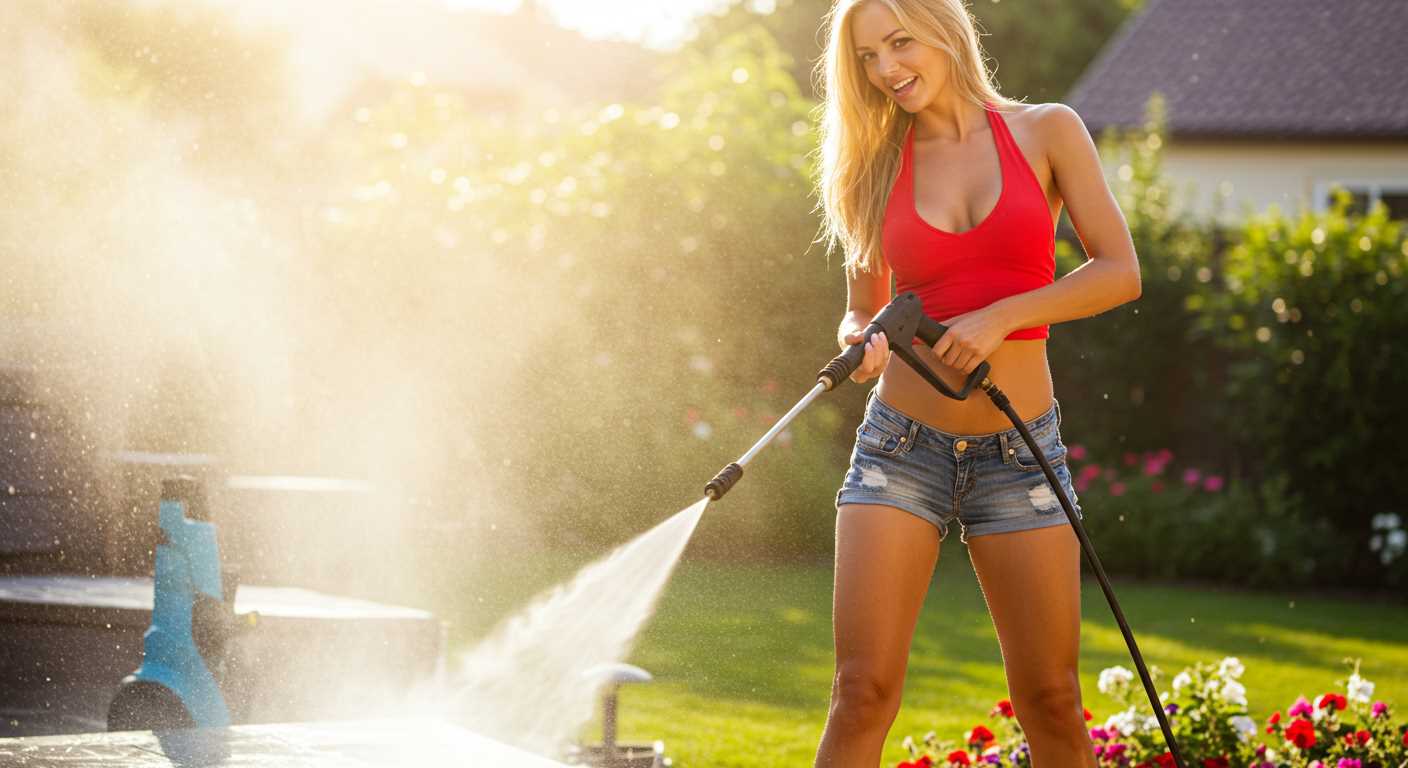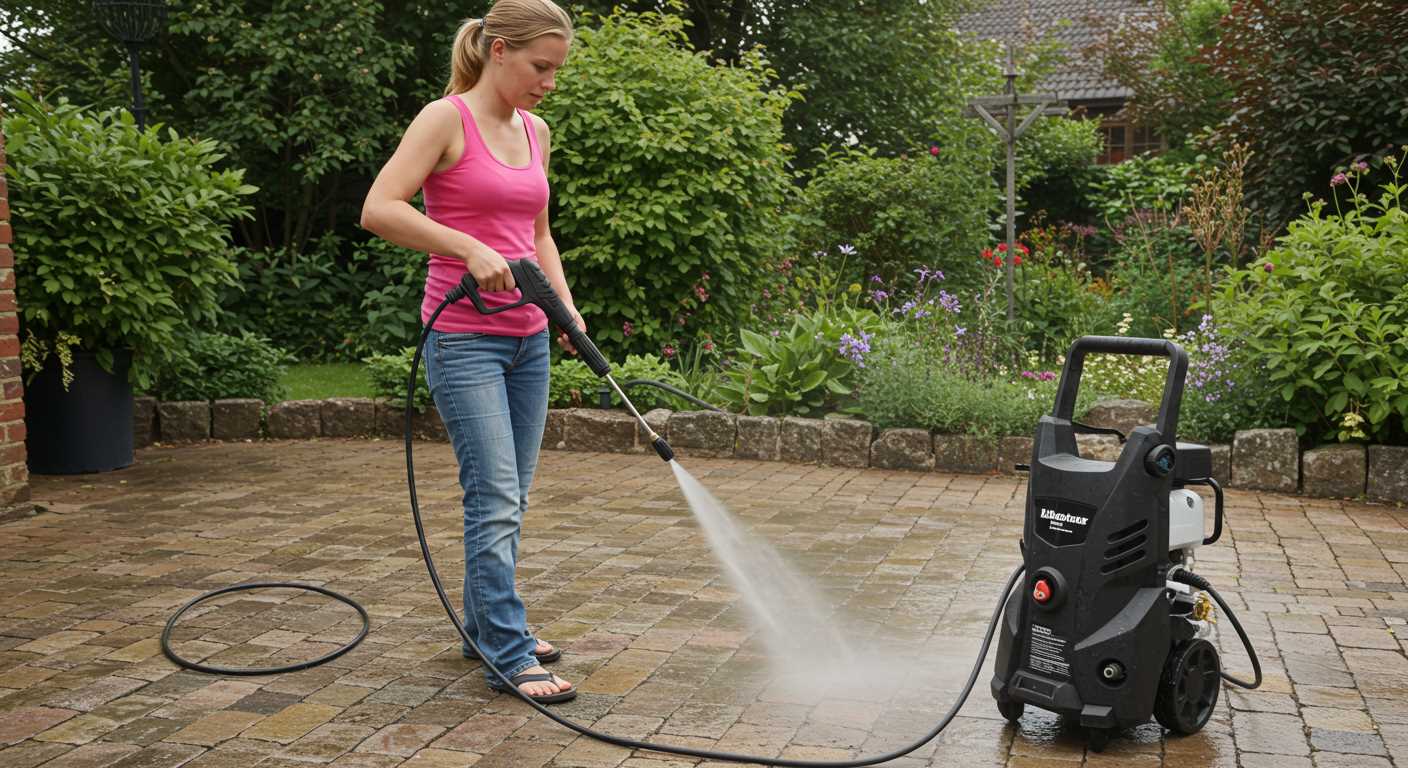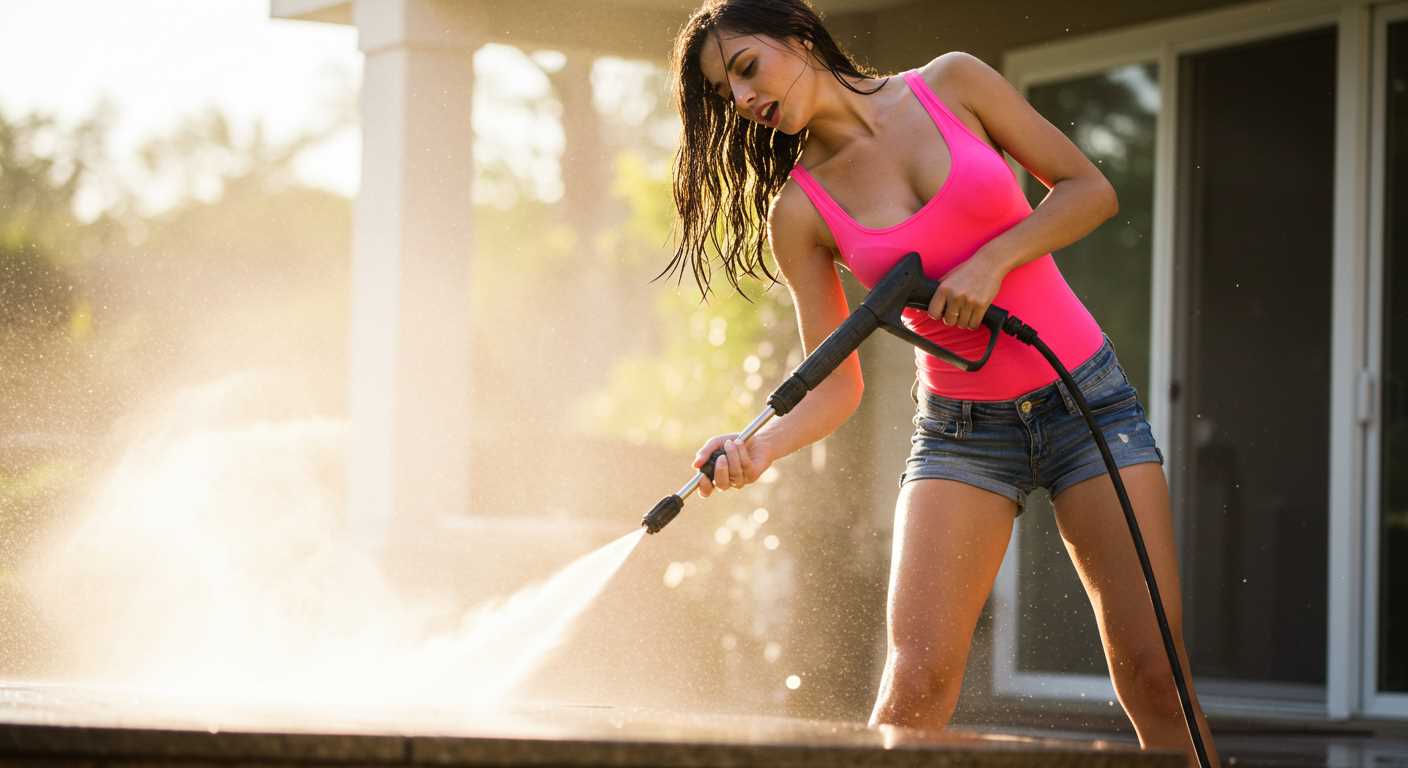

Using high-pressure cleaning equipment requires strict adherence to safety protocols. I recommend wearing protective gear, including goggles, gloves, and sturdy footwear, to minimise the risk of injury from flying debris and high-velocity water jets. Jet streams can cause severe injuries, including skin lacerations and eye damage; therefore, investing in proper safety equipment is non-negotiable.
Before operating any model, it is crucial to read the manufacturer’s manual thoroughly. Each unit has specific instructions regarding pressure settings and safe operational distances from surfaces. For instance, maintaining at least 30 cm from delicate materials prevents damage while ensuring effective cleaning. Additionally, familiarising oneself with the safety features of the machine can greatly reduce accidents.
In my extensive experience with various makes and models, I found that the higher pressure settings are not always beneficial. Using excessive force can compromise the structural integrity of surfaces, especially wood and older masonry. It’s often more effective to combine moderate pressure with appropriate cleaning solutions for stubborn stains. Thus, understanding the machine’s capabilities is essential for both safety and optimal performance.
How Hazardous Can High-Pressure Cleaning Tools Be
Always wear protective gear, including safety goggles, gloves, and non-slip footwear, before operating powerful cleaning machines. Their jets can propel water at upwards of 3000 PSI, which can easily cause severe lacerations or penetrating injuries. Ensure that clothing fits tightly and covers as much skin as possible to minimise injury from flying debris.
Before starting, inspect the hose and all connections for leaks or wear. A compromised hose can burst unexpectedly, splattering water and debris. I’ve witnessed this leading to accidents that could have been avoided with a simple pre-use check.
Handling Environment and Equipment
Maintain a safe distance from fragile surfaces, such as windows and delicate plants. The force generated can shatter glass or dislodge plants, resulting in both physical damage and potential injuries. Always adjust the nozzle to suit the specific task to avoid unnecessary hazards.
Keep bystanders at a safe distance, preferably at least 10 metres away, while operating. I’ve seen how quickly accidents can happen when others underestimate the power of these machines. Establish clear communication and ensure that everyone knows when the cleaning exercise is underway.
Proper Technique and Maintenance
.jpg)
Practice proper technique by holding the equipment firmly with both hands, and avoid pointing it at anyone or any animals. Allow the motor to cool down before any maintenance, as components can reach high temperatures. Regularly replace worn-out parts to prevent malfunction. Maintenance goes a long way in ensuring these tools function safely and effectively.
Storing this equipment properly also contributes to safety. Keep it in a dry area, avoiding exposure to moisture that can lead to electrical malfunctions. Lastly, familiarize yourself with the manual specific to your model; it often contains valuable safety instructions that can help prevent accidents.
The Risks of High-Pressure Water Jets

Always wear appropriate protective gear, including safety goggles, gloves, and sturdy footwear when operating high-pressure equipment. This equipment can propel water at a velocity exceeding 1,500 psi, capable of causing serious injury to skin, muscles, and even bones. Injuries from water jets can result in puncture wounds, lacerations, or serious soft tissue damage, which may require surgical intervention.
Consider the operational environment carefully. Close proximity to fragile surfaces, power lines, or anyone else can lead to unintended damage or injury. The force of the water stream is unpredictable; thus, the user should maintain a safe distance from sensitive areas or delicate objects.
Misuse often stems from a lack of understanding regarding nozzle adjustments. Switching nozzles without a proper grasp of their respective spray patterns can lead to risks. A narrow spray can deeply penetrate surfaces, while a wide spray may lack control, leading to splashing that can injure nearby individuals.
Inadequate training presents another significant concern. Ensure users are well-informed about handling, maintenance, and safe operational protocols. Familiarising oneself with the equipment’s manual and practicing under supervision can significantly reduce the risk of accidents.
Lastly, maintain equipment regularly. Wear and tear can affect functionality and safety. Inspect hoses for leaks, connectors for sturdiness, and ensure that safety features operate as intended. Regular maintenance prolongs the life of the machine and mitigates unexpected failures during use.
Common Injuries from Improper Use
Utilising high-powered cleaning equipment without adequate knowledge can lead to serious injuries. Familiarity with the hazards involved is critical to preventing avoidable accidents. One of the most frequent injuries is skin lacerations. The intense force of the water jet can penetrate the skin and cause deep cuts, which may require medical treatment and stitches.
Eye Injuries
Another prevalent risk involves eye injuries. Small debris propelled by the strong water jet can strike the eyes, potentially resulting in permanent damage. Protective eyewear is a non-negotiable precaution for anyone operating this type of machinery.
Slip and Fall Incidents
Wet surfaces created during usage can lead to slip and fall incidents. These accidents can vary from minor bruises to severe fractures, especially for those working on uneven ground. Ensuring that the area is dry and using non-slip footwear mitigates this risk.
Protective Gear You Should Wear
Always wear safety goggles or face shields to protect your eyes from debris. High-pressure water can dislodge dirt, stones, and other particles, potentially causing serious eye injuries.
Ear protection is vital if operating a model that produces excessive noise. Use earplugs or noise-cancelling headphones to guard your hearing from prolonged exposure.
Long-sleeved shirts and trousers help prevent skin contact with the water stream, which can cause lacerations or burns. Choose durable fabrics that can withstand potential cuts.
Invest in heavy-duty gloves. They provide grip and protect your hands from sharp objects and theforce of the water stream, which can lead to injuries.
Footwear should be non-slip and durable. Steel-toed boots can provide extra protection against heavy equipment and accidental falls.
- Safety goggles or face shields
- Ear protection
- Long-sleeved clothing
- Heavy-duty gloves
- Non-slip, steel-toed boots
Regular inspection of your gear is important. Replace items that show signs of wear, ensuring maximum protection during use.
Safe Operating Procedures for Homeowners
Prioritise equipment maintenance before usage. Check hoses for leaks and ensure all connections are secure. Inspect the nozzle for damage, as a compromised nozzle can alter jet pressure, leading to unsafe situations.
Preparation Steps

- Read the manufacturer’s manual thoroughly to understand the specific model’s requirements.
- Select an appropriate cleaning agent that suits the job but remains safe for surfaces.
- Gather necessary supplies including extension cords rated for outdoor use and a stable ladder if elevation is needed.
Operational Guidelines

- Maintain a firm grip on the wand at all times to avert losing control of the jet stream.
- Keep a safe distance while operating, ensuring a minimum of 30 centimetres from any surface.
- Avoid pointing the nozzle at individuals, pets, or fragile materials.
- Utilise the lower pressure settings for delicate surfaces to prevent damage.
- Use a two-handed grip for increased stability, especially when starting the machine.
In case of a malfunction, turn off the equipment immediately. Disconnect from the power source before attempting any troubleshooting or repairs. Never bypass safety features designed to protect users.
Post-Usage Procedures
- Drain any remaining water and clean the nozzle to prevent clogs.
- Store the machine in a dry place, avoiding exposure to extreme weather.
- Regularly evaluate the equipment for signs of wear or damage that could impede future use.
By following these steps, I’ve experienced fewer incidents and a more enjoyable cleaning experience. Remember, safety goes hand in hand with effective cleaning.
Understanding the Impact on Surfaces and Materials
Before using a high-pressure cleaning device, ascertain the compatibility of the device with the surface you intend to clean. For instance, wooden decks or painted surfaces often cannot withstand high settings, as the force may strip away finishes or cause splintering.
Concrete and brick surfaces, while sturdier, can still suffer from pitting or etching if too high a nozzle setting is applied. A lower pressure setting coupled with a wider nozzle can mitigate this risk, ensuring effective cleaning without damage.
For delicate materials like vinyl siding or certain roofing shingles, adjusting the spray angle is critical. A 25-degree nozzle tends to prevent any adverse effects, while direct contact with stronger jets can lead to costly repairs.
Always test a small, inconspicuous area before committing to an entire surface treatment. This approach helps gauge the impact and adjust the pressure accordingly. Pay special attention to grout lines and sealants, as these areas are prone to weakening.
Finally, remember that varying materials may require different cleaning agents. For example, using specific detergents suited to the surface type can enhance results while preventing long-term degradation.
When to Call a Professional Instead
Consider engaging a professional for tasks involving delicate surfaces, complex structures, or when large equipment is necessary. If the cleaning project involves materials susceptible to damage, like rotted wood or painted surfaces, it’s prudent to seek expert help. Additionally, if you’re uncertain about the required pressure settings or cleaning agents, consulting a specialist can prevent costly mistakes.
In situations with difficult access areas, such as multi-storey buildings or rooftops, hiring trained personnel with proper equipment reduces safety risks. This choice is especially advisable if you lack experience with heights or manoeuvring heavy equipment.
For extensive outdoor areas, like patios or driveways, a professional service offers efficiency. Their expertise guarantees thorough cleaning while avoiding potential surface harm, which can occur with improper usage.
Here’s a quick reference table highlighting common scenarios for calling in experts:
| Scenario | Reason to Call a Professional |
|---|---|
| Delicate Surfaces | Risk of damage or discolouration |
| Hard-to-Reach Areas | Safety concerns with heights and access |
| Complex Structures | Lack of experience in handling unusual features |
| Extensive Projects | Efficiency and thoroughness prevent mistakes |
Ultimately, evaluating the scope and nature of your cleaning task should guide your choice. A professional can provide peace of mind and ensure the job is completed safely and effectively.
Maintenance Tips to Ensure Safe Operation
Regularly inspect all components before usage. Pay close attention to hoses for cracks or wear, as well as ensuring connections are secure. This simple check can prevent costly accidents.
Flush the system with clean water after every use. This practice helps eliminate contaminants and prevents sediment buildup, which can affect performance.
Store the equipment in a dry, sheltered area. Exposure to harsh weather conditions can deteriorate materials and compromise functionality.
Replace worn or damaged parts immediately. Using inefficient components can create risks during operation and lead to more severe issues over time.
Ensure the power supply is appropriate for the unit. An improper power source can damage the motor and pose a safety hazard.
Refer to the manufacturer’s guidelines for maintenance schedules. Following these recommendations can prolong life and ensure reliability.
Consider using a water filter. This will reduce the chances of clogging and improve the efficiency of the setup, contributing to safer usage.
Keep a detailed log of maintenance activities. This record can be valuable for identifying patterns in any recurring issues that require attention.







